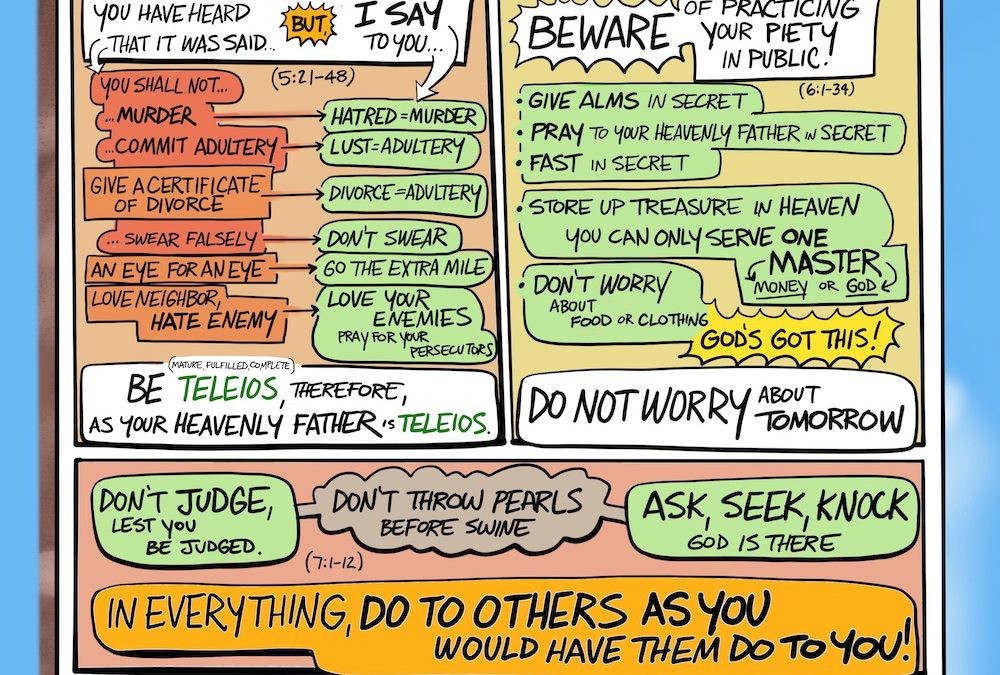Exploring the Gospel of Matthew through the eyes of a cartoonist offers a fresh and engaging perspective. This guide delves into how visual storytelling can illuminate the narratives, teachings, and deeper meanings within the Book of Matthew, making it accessible to a wider audience.
The Gospel of Matthew, one of the synoptic gospels, presents a unique portrayal of Jesus Christ. It emphasizes Jesus as the promised Messiah, the King of the Jews, and the fulfillment of Old Testament prophecies. Understanding Matthew requires grasping its historical context, theological themes, and literary structure. A cartoonist’s approach can simplify complex ideas and make the gospel more relatable.
Visualizing Key Themes in Matthew
A cartoonist’s guide to Matthew can effectively visualize several key themes:
-
The Kingdom of Heaven: Matthew frequently uses the phrase “Kingdom of Heaven” to describe God’s reign on earth. Cartoons can depict the Kingdom as a transformative force, bringing justice, peace, and healing.
-
Jesus as the Messiah: The genealogy of Jesus, his miracles, and his teachings all point to his identity as the Messiah. Visual representations can highlight these connections, emphasizing Jesus’ lineage and his fulfillment of prophecy.
-
The Sermon on the Mount: This collection of Jesus’ teachings (Matthew 5-7) covers topics such as righteousness, love, and forgiveness. Cartoons can illustrate these principles in action, making them easier to understand and apply.
A Cartoonist’s Toolkit for Matthew
To effectively portray the Gospel of Matthew, a cartoonist needs a specific toolkit:
-
Character Design: Depicting Jesus and other key figures with distinct personalities and appearances is crucial. Cartoons can emphasize Jesus’ compassion, wisdom, and authority.
-
Symbolism: Matthew’s Gospel is rich in symbolism. A cartoonist can use visual metaphors to represent abstract concepts such as faith, sin, and redemption.
-
Storyboarding: Planning out the narrative flow with storyboards helps to maintain clarity and coherence. Each panel should contribute to the overall message of the passage.
-
Visual Humor: While maintaining reverence, a touch of humor can make the content more engaging and memorable. This can be especially effective in illustrating the parables.
Examples of Visual Interpretations
Here are some examples of how specific passages in Matthew can be visualized:
-
The Parable of the Sower (Matthew 13:1-23): A cartoon could show a farmer scattering seeds on different types of soil, with visual cues indicating the varying outcomes based on the receptiveness of the “soil” (people’s hearts) to the message.
-
The Feeding of the 5,000 (Matthew 14:13-21): A comic strip could depict the overwhelming need of the crowd, the disciples’ limited resources, and Jesus’ miraculous provision of food, emphasizing the abundance of God’s grace.
-
The Great Commission (Matthew 28:16-20): This climactic scene could be visualized with Jesus commissioning his disciples, empowering them to go and make disciples of all nations. The image could convey a sense of purpose, authority, and the global reach of the gospel.
Benefits of a Visual Approach
Using cartoons to explore the Gospel of Matthew offers several benefits:
-
Increased Engagement: Visuals can capture attention and make the content more accessible, particularly for younger audiences and visual learners.
-
Enhanced Understanding: Cartoons can simplify complex theological concepts and make them easier to grasp.
-
Improved Retention: Visual memories are often stronger than purely textual ones, leading to better retention of the material.
-
Cross-Cultural Communication: Visuals can transcend language barriers, making the gospel message more accessible to people from diverse cultural backgrounds.
Conclusion
A cartoonist’s guide to Matthew provides a valuable tool for understanding and engaging with this important book of the Bible. By using visual storytelling, cartoonists can illuminate key themes, simplify complex concepts, and make the gospel message more accessible and memorable for a wide range of audiences. Embracing this creative approach can open new avenues for sharing the Gospel and inspiring faith.

